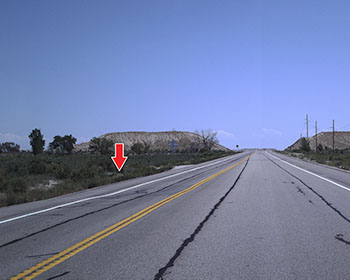MPC Research Reports
Report Details
Abstract
 The purpose of this research project was to investigate and determine the reasons for premature deterioration of the geogrid-reinforced pavement system on the section of SR-10 between Muddy Creek and Emery, Utah.
The purpose of this research project was to investigate and determine the reasons for premature deterioration of the geogrid-reinforced pavement system on the section of SR-10 between Muddy Creek and Emery, Utah.
The statistical analyses and evaluations indicate that the structural design of the primary pavement system was adequate as the stiffness measurements of the primary layers did not correlate with measured pavement distress. Even though the asphalt-concrete layer was subjected to significant deformations in the longitudinal and transverse directions, it displayed negligible cracking. Therefore, the upper layer of geogrid likely provided the necessary tensile reinforcement to prevent tension cracking in the asphalt-concrete layer despite large movements in the embankment and subgrade. The characteristics of the fill and subgrade likely dominated the performance of the pavement. The structural design of the pavement system did not consider the vulnerability of the subgrade and embankment to loading-induced and wetting-induced volume changes.
Statistical analyses showed that the presence of soil behavior types 3, 4, 8, and 9 in the fill plus subgrade layer were adequate predictors of IRI performance and good predictors of rutting performance. Subgrade soil from cut sections was sampled and tested for collapse and swell potential. It was found to swell under low overburden pressures and collapse under medium to high overburden pressures. This soil, or similar native soil, was likely used as native embankment fill in some pavement sections. Sections with embankment fills under the negative direction of travel were vulnerable to loading-induced and wetting-induced volume changes.
Additional commentary and recommendations are provided in this report for suitable embankment fill material and pavement support materials, along with effective placement of geogrid and geotextile in a pavement section for future UDOT projects.
How to Cite
Burns, Henrik, Evert Lawton, and Pedro Romero. Forensic Evaluation of Geogrid-Reinforced Flexible Pavement Sections on SR-10 near Emery, Utah, MPC-23-498. North Dakota State University - Upper Great Plains Transportation Institute, Fargo: Mountain-Plains Consortium, 2023.

